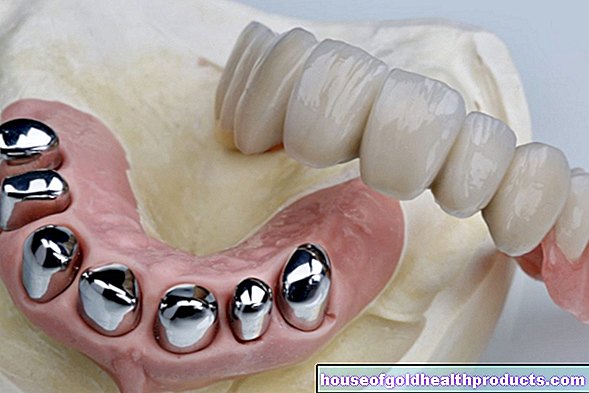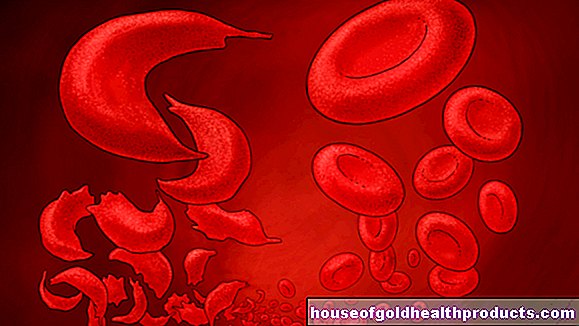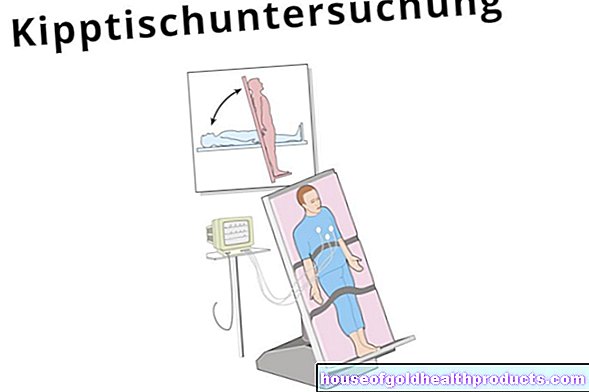multiple personality disorder
Updated onJulia Dobmeier is currently completing her master's degree in clinical psychology. Since the beginning of her studies, she has been particularly interested in the treatment and research of mental illnesses. In doing so, they are particularly motivated by the idea of enabling those affected to enjoy a higher quality of life by conveying knowledge in a way that is easy to understand.
More about the experts All content is checked by medical journalists.Multiple personality disorder (dissociative identity disorder) is the most severe form of dissociative disorder. It often arises as a result of severe traumatic experiences in childhood in which the personality splits. The different parts of the personality exist side by side and alternate with each other. As a rule, they don't know anything about each other and have different characters, preferences, abilities and memories. Read more about multiple personality disorder here!
ICD codes for this disease: ICD codes are internationally recognized codes for medical diagnoses. They can be found, for example, in doctor's letters or on certificates of incapacity for work. F44

Multiple personality disorder: description
The multiple personality disorder is now referred to by experts as dissociative identity disorder. Because strictly speaking, it is not a real personality disorder. A characteristic of multiple personality disorder is that the different personality parts of a person come to the fore separately from one another, without these having to be disturbed.
The various personality components (also called "other people", self-states or identities) usually differ greatly from one another and never occur at the same time. For example, the person concerned has a balanced and friendly personality and another one who is quick-tempered and easily irritable. Depending on which personality is in the foreground, it is possible that the person claims a different age and even a different gender.
Often those affected have developed a part of their personality which, in terms of its development, has remained in childhood. This part of the personality is then in its mental and physical abilities at the level of a child. This can mean, for example, that the person in this state can neither write nor read.
There can be not only two, but also significantly more personalities, with one of them usually taking the lead. Most of the time, those affected are unaware of their different personalities. If they are in a certain state at the moment, they cannot remember what the other personalities said or did, and vice versa.
Multiple personality disorder occurs in around 1.5 percent of the population. It affects women and men almost equally often.
Multiple personality disorder: symptoms
According to the international classification of mental disorders (ICD-10), the following symptoms must be present for a diagnosis of multiple personality disorder:
- There are two or more different personalities within an individual, of which only one can be proven at any given time.
- Each personality has their own memories, preferences, skills, and behaviors.
- Each of them takes full control over the behavior of the person at a certain time (also repeatedly).
- Those affected are unable to remember important personal information if it relates to another personality who is not "present" at the moment.
- Symptoms are not due to an organic disorder such as epilepsy or drug abuse.
In addition to these signs, symptoms of other dissociative disorders often appear in multiple personality disorder. The people have memory gaps (amnesia) or symptoms of paralysis. Physical pain, for which doctors cannot find an organic cause, is also typical of dissociative identity disorder. Symptoms are, for example, headache or abdominal pain and sleep disorders. Very often those affected also have suicidal thoughts or harm themselves.
Multiple personality disorder: causes and risk factors
Multiple personality disorder is often the result of severe abuse experiences. Studies have shown that over 90 percent of those affected suffered trauma in early childhood. For example, those affected report having been sexually abused or forced into child prostitution by several people as part of a ritual. Violence and torture can also trigger multiple personality disorders.
The multiple personality is a protective mechanism here. In order to endure the psychologically and / or physically unbearable cruelty, the psyche splits up. During the abuse, the person mentally moves to another place where they are not aware of the pain and traumatic experiences. But since she is still physically present, another part does register the pain and experiences of violence.
Children also have an increased ability to dissociate.Over time, they give the different parts of the personality their own name, age and gender.
So if children are repeatedly exposed to traumatic situations that they cannot cope with, and if they do not receive support and security from their families, they may develop a split personality. Symptoms of this split often show up in childhood or adolescence.
Criticisms
The dissociative personality disorder is discussed controversially again and again. Proponents of the sociocognitive model deny that multiple personality disorder is a clinical picture. They assume that the therapist is telling the patient the idea of different parts of the personality or that the patient is playing the symptoms in order to get attention.
Current research results and clinical experience speak against this assumption. Another argument against it is that most patients hide their symptoms for a long time because they are afraid of being declared insane. In fact, people with multiple personality disorder are not always taken seriously. When they report the crimes that have been perpetrated against them, their credibility is often called into question.
Multiple personality disorder: examinations and diagnosis
It starts with a detailed conversation between doctor and patient. Possible questions from the doctor include, for example:
- Do you sometimes feel like there is an argument inside you about who you really are?
- Do you have dialogues with yourself?
- Do other people tell you that sometimes you act like another person?
Clinical questionnaires help diagnose dissociative identity disorder.
Some symptoms of a multiple personality disorder can also be caused by organic brain processes, which can be clarified through physical examinations.
Diagnosing dissociative identity disorder is difficult. Misdiagnoses are not uncommon. Because most of the time, those affected suffer from other psychological disorders (e.g. eating disorders, depression) that hide the dissociative identity disorder. In addition, many patients with multiple personality disorder downplay their symptoms.
Multiple personality disorder: treatment
In most cases, multiple personality disorder (dissociative identity disorder) is treated as part of trauma therapy. This can be carried out on an inpatient, partial inpatient or outpatient basis.
Multiple personality disorder: psychotherapy
In the first phase of therapy, the therapist stabilizes the patient. This should feel safe and build trust. Only then can traumatic experiences be dealt with together. Those affected often have a distorted view of the traumatic events and believe, for example, that they are to be blamed for the mistreatment themselves. By coming to terms with the trauma, the patient can understand what really happened.
The aim of the therapy is to bring together the different parts of the personality. However, full integration is not always possible. On the one hand, the patients often do not know anything about the actions of their other parts of the personality (amnesias). On the other hand, some of those affected do not want the personality components to clash. So if complete integration does not succeed, the therapist works to ensure that the various parts communicate with one another.
When the patient gets to know all the inner parts, he gains a sense of identity. The better the personality components are integrated, the easier it is for those affected to cope with everyday life.
Therapy for multiple personality disorder (dissociative identity disorder) often takes several years. Despite the severity of the mental disorder, it can generally be treated so successfully that those affected can lead a largely normal life.
Multiple personality disorder: medication
To date, there are no drugs that are approved for the treatment of multiple personality disorder. In some cases, however, doctors use antipsychotic drugs (e.g., risperidone) to treat accompanying sleep or anxiety disorders, or selective serotonin reuptake inhibitors (e.g., fluoxetine) to treat symptoms of depression.
Multiple personality disorder: disease course and prognosis
Multiple personality disorder is usually chronic. The more severe the trauma is, the more difficult it is to heal. The illness is often accompanied by other mental disorders that complicate treatment. However, advances in therapeutic treatments for traumatized people have improved the prognosis of multiple personality disorder (dissociative identity disorder) in recent years.
Tags: sex partnership skin care desire to have children























.jpg)
.jpg)




